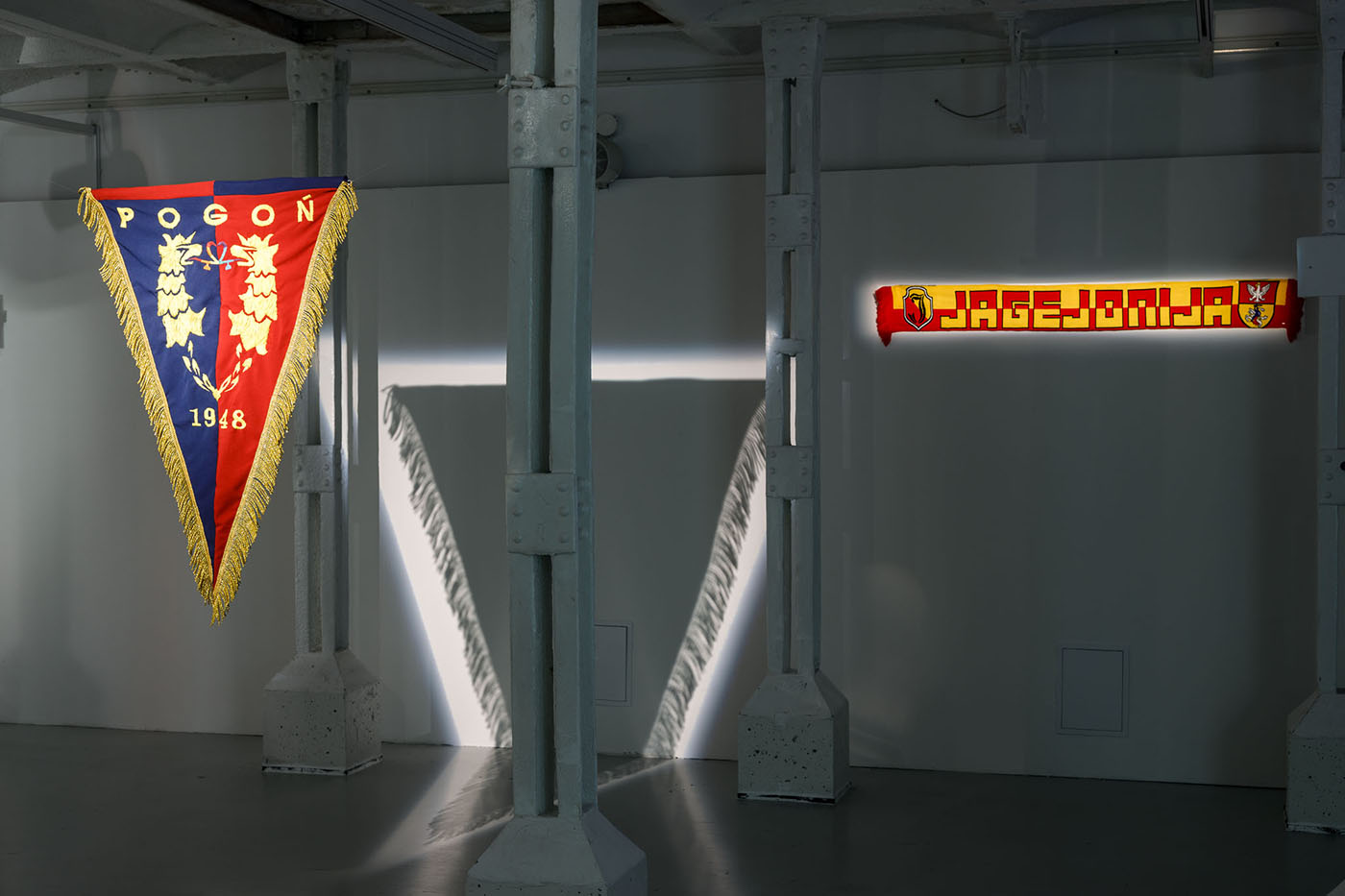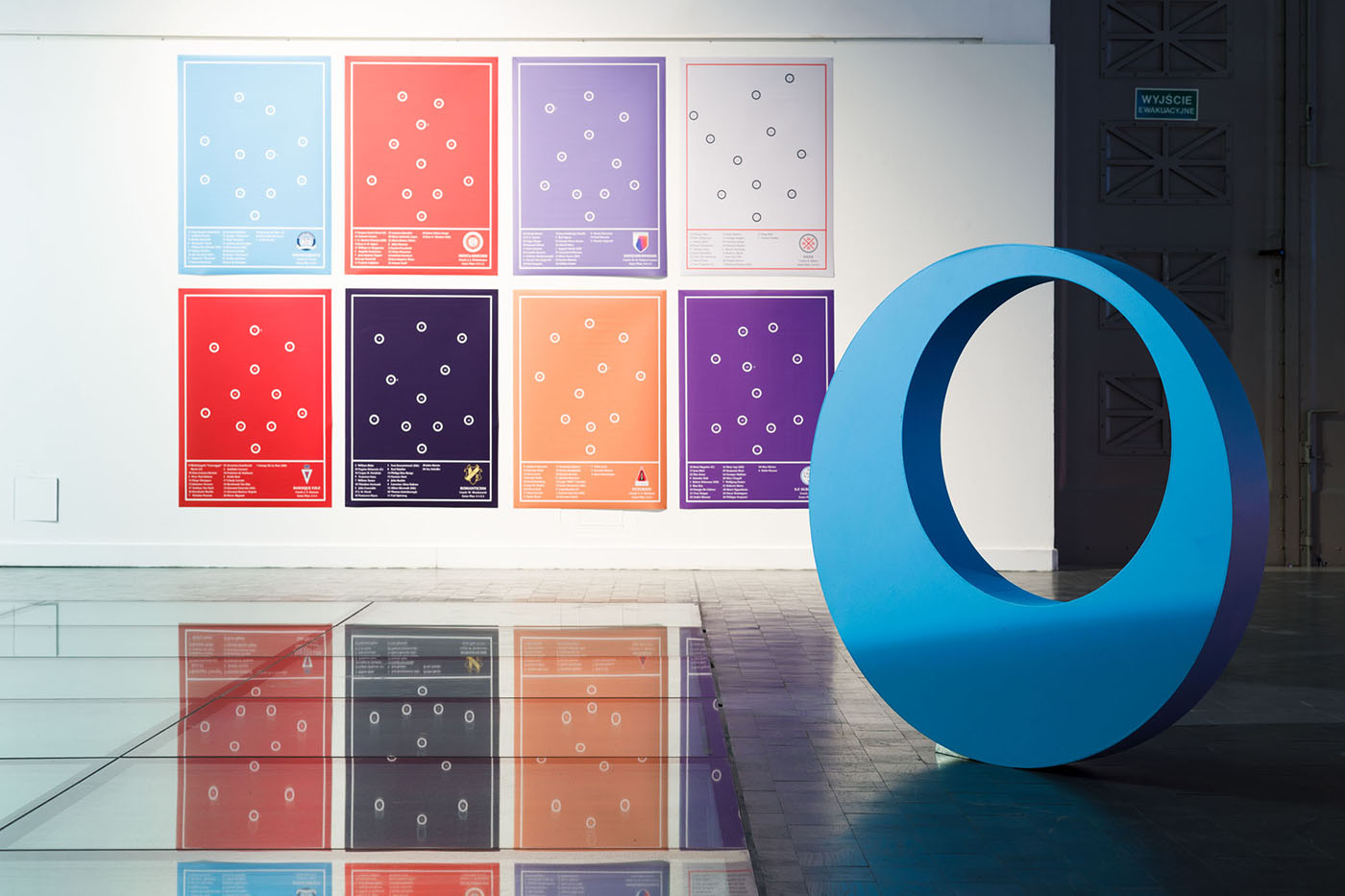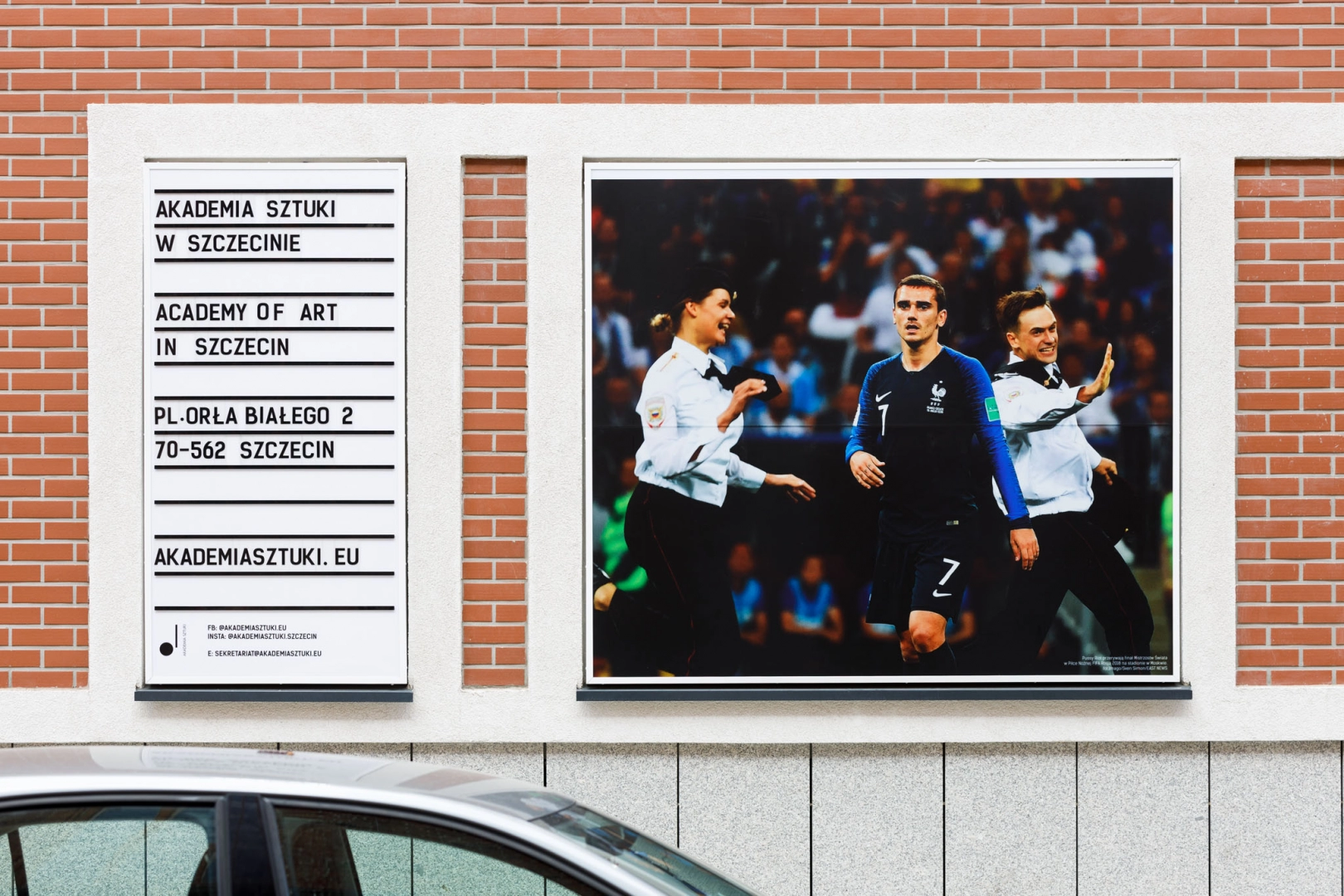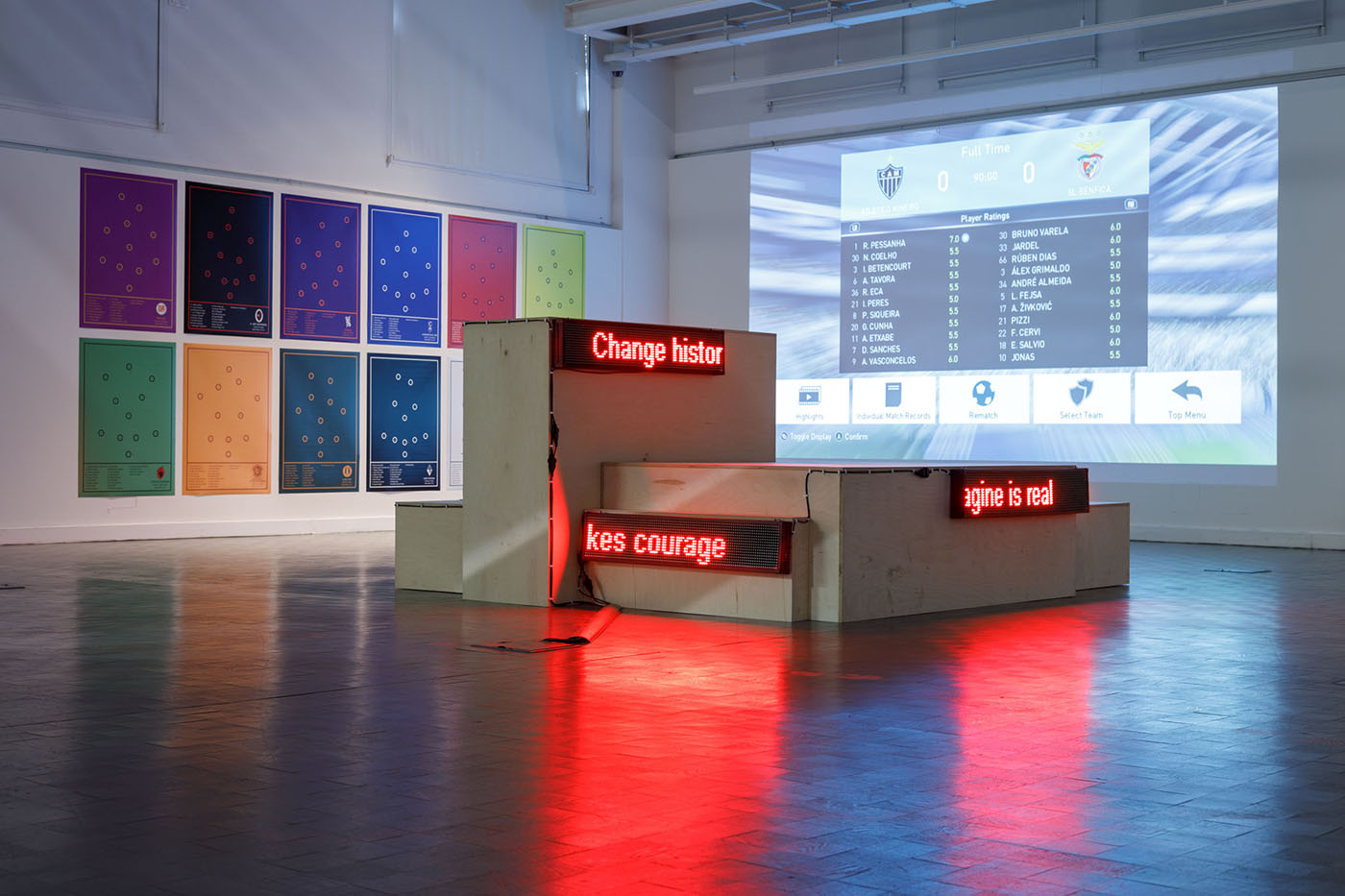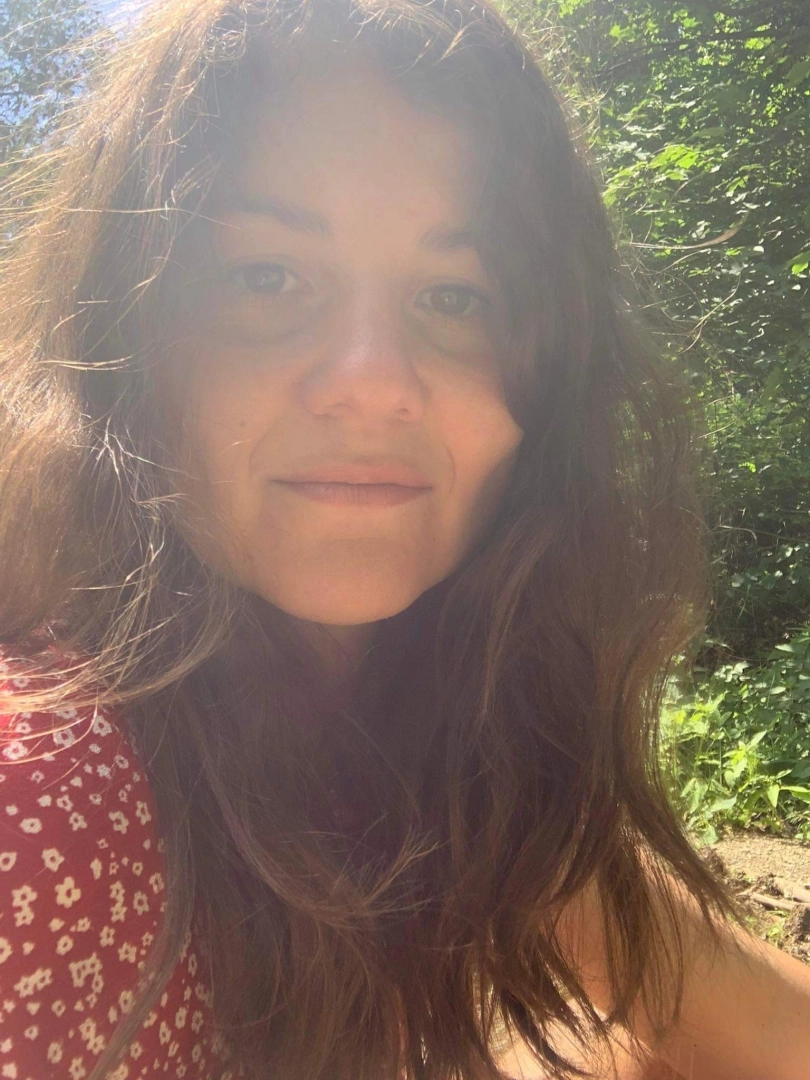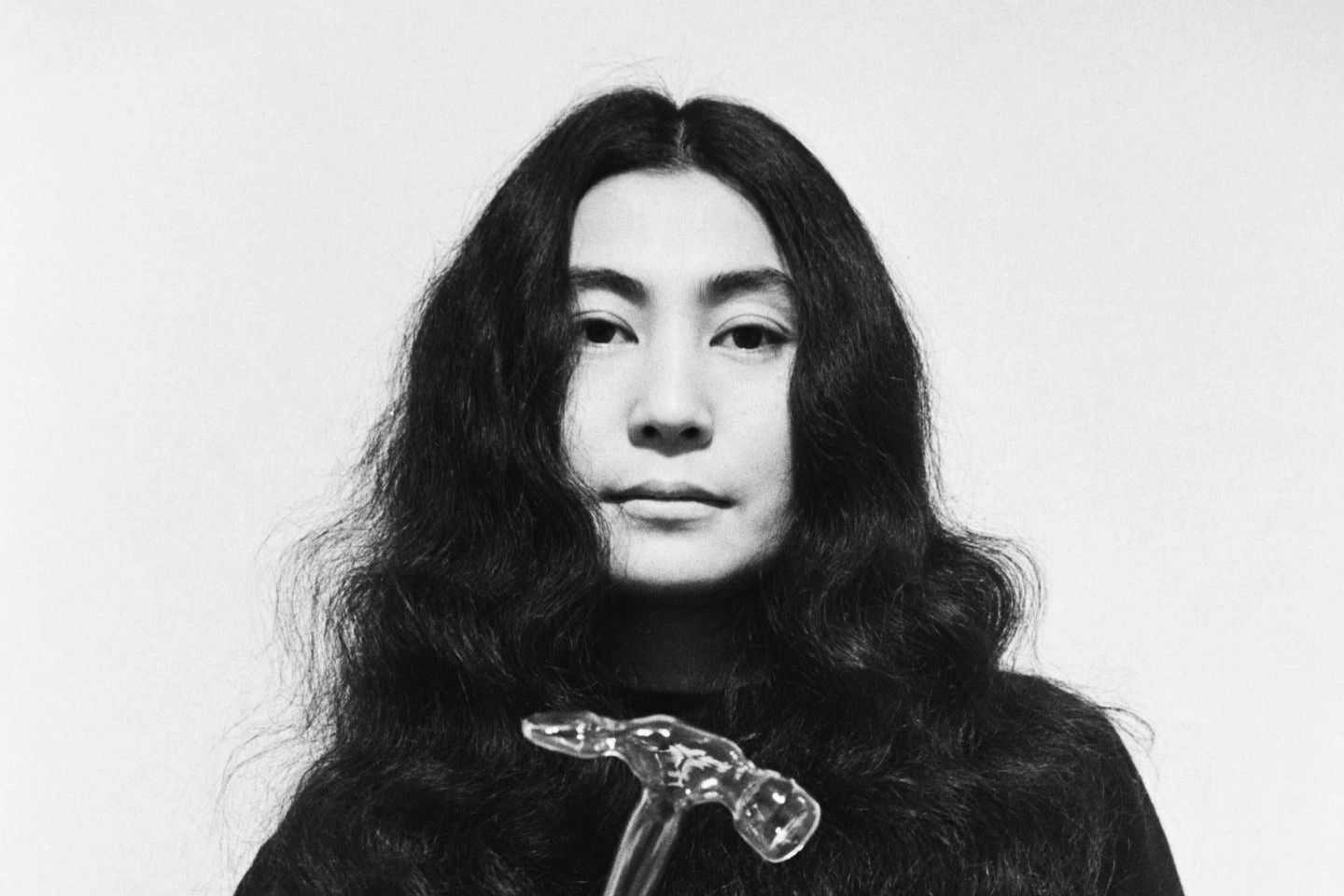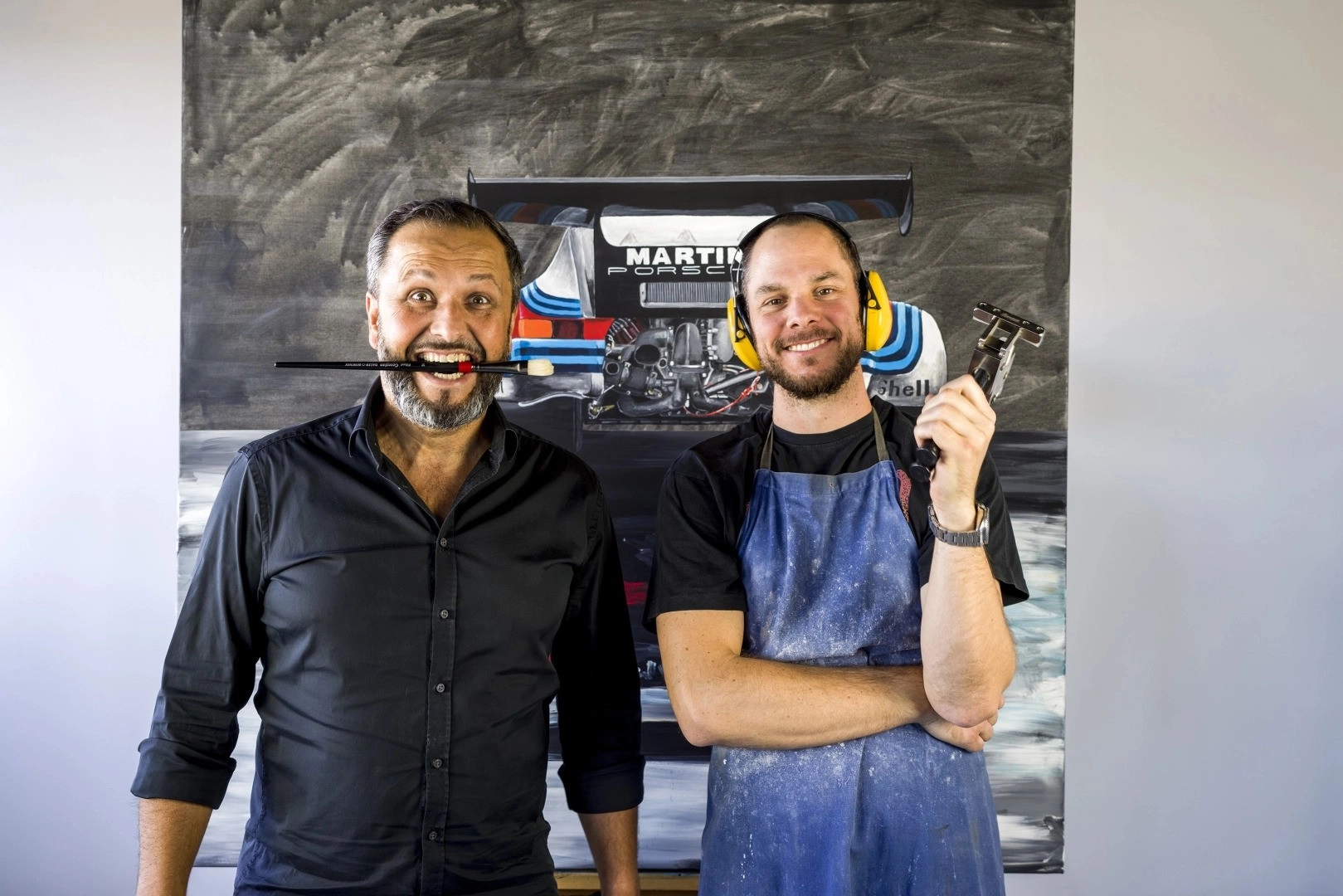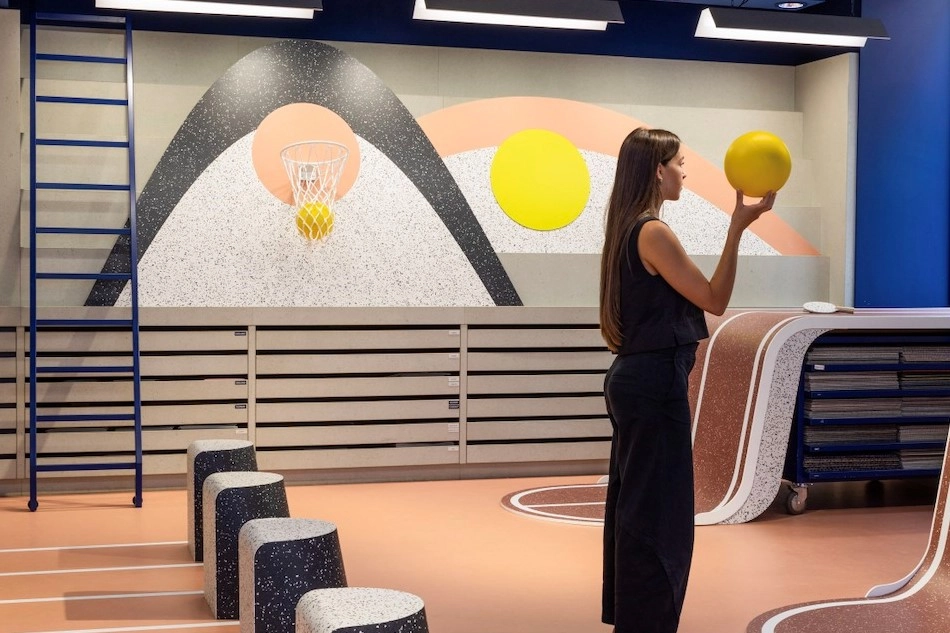„Football is the last sacred ritual of our times“, claimed the legendary Italian film director Pier Paolo Pasolini. An exhibition took place this year at the Trago Gallery in the Polish city of Szczecin, titled First place in the table, focusing on the artistic reflection of this sport and its socio-cultural (and not always positive) consequences.
Football as a mirror to society
The curatorial text for the First place in the table exhibition describes how football can be viewed as a metaphor for today’s world or a mirror reflecting contemporary processes and phenomena, that are a testament to the rules of present-day interpersonal relationships. On the one hand, it is a mass spectacle, reflecting questions of conflict, wars, politics, capitalism and social inequality. On the other hand, this sport strongly intensifies feelings of belonging among the members of society.
The attention directed towards football has been taken advantage of even by the members of the Russian group Pussy Riot when on 15th July 2018 during the second half of a World Cup match they entered the field at the Luzhniki Stadium in Moscow and temporarily disrupted the game with their protest against Kremlin politics. A video recording of their performance is shown at the exhibition.


The fact that football remains a very male, even chauvinist discipline, was brought forward by the FEMEN group during their protest against EURO 12 in Kyiv: “The main idea of the championship, as UEFA sees it, is to make money, sexually harass Ukrainian and Polish women and get men drunk. We are against Euro 12. We fight all symbols connected to the championship,” stated activist Alexandra Shevchenko on the group’s behalf. The exhibition also showed a video of this protest performance.
However, the exhibition also explored the fact that the emancipatory potential of football is still growing. Women’s football is gaining more popularity and we are also witnesses of friendly gestures of the football community towards LGBTQ+ people. Justin Fashanu was the first football player to publicly come out as gay in 1990 and many followed.
Big stories for little people
Football tells big stories. Even a small football club can become a surface on which the desires and unfulfilled ambitions of its supporters are projected. Football fans like to dream how one day their team will close the season with first place in the table.
„Real football fans are working class, and those can’t afford to attend matches today,” this sad fact was pointed out by legendary French player Eric Cantona. Artist Lukasz Surowiec created a victory cup for the First place in the table exhibit, inscribed with: „The best player is a taxpayer“, pointing out the astronomical sums earned by top professional football players (and also the paradoxical chasm between them and the aforementioned working-class fan who can only dream of these big stories).

These days, big football stadiums are only accessible to the rich. But changes are happening. One example is the movement Against Modern Football which challenges the dominance of profiteering logic. In 2005 a group of Manchester United fans came together and founded FC United of Manchester as a reaction to the club’s purchase from Old Trafford by the Glazer family. The takeover of Man United by the Glazers was a “catalyst and the last drop” for the fans who were frustrated by the goings-on outside of the field: “FC United was trying to change the way football is run and to place the fans at the centre of events,” stated the first declaration of the new club.
Hope dies last
The exhibition also introduced the Polish group Nagrobki (Gravestones), founded by artists Maciek Salamon (born in 1984) and Adam Witkowski (born in 1978). Their texts usually talk about death and dying. Salamon and Witkowski are responsible for several cult records and also make music for theatre. A year ago, before EURO 2020/2021, they recorded a “football” anthem Nadzieja umiera ostatnia (Hope dies last). „The problem is that we like football but we don’t respect nationalist values that are usually tied with it,” commented the authors.
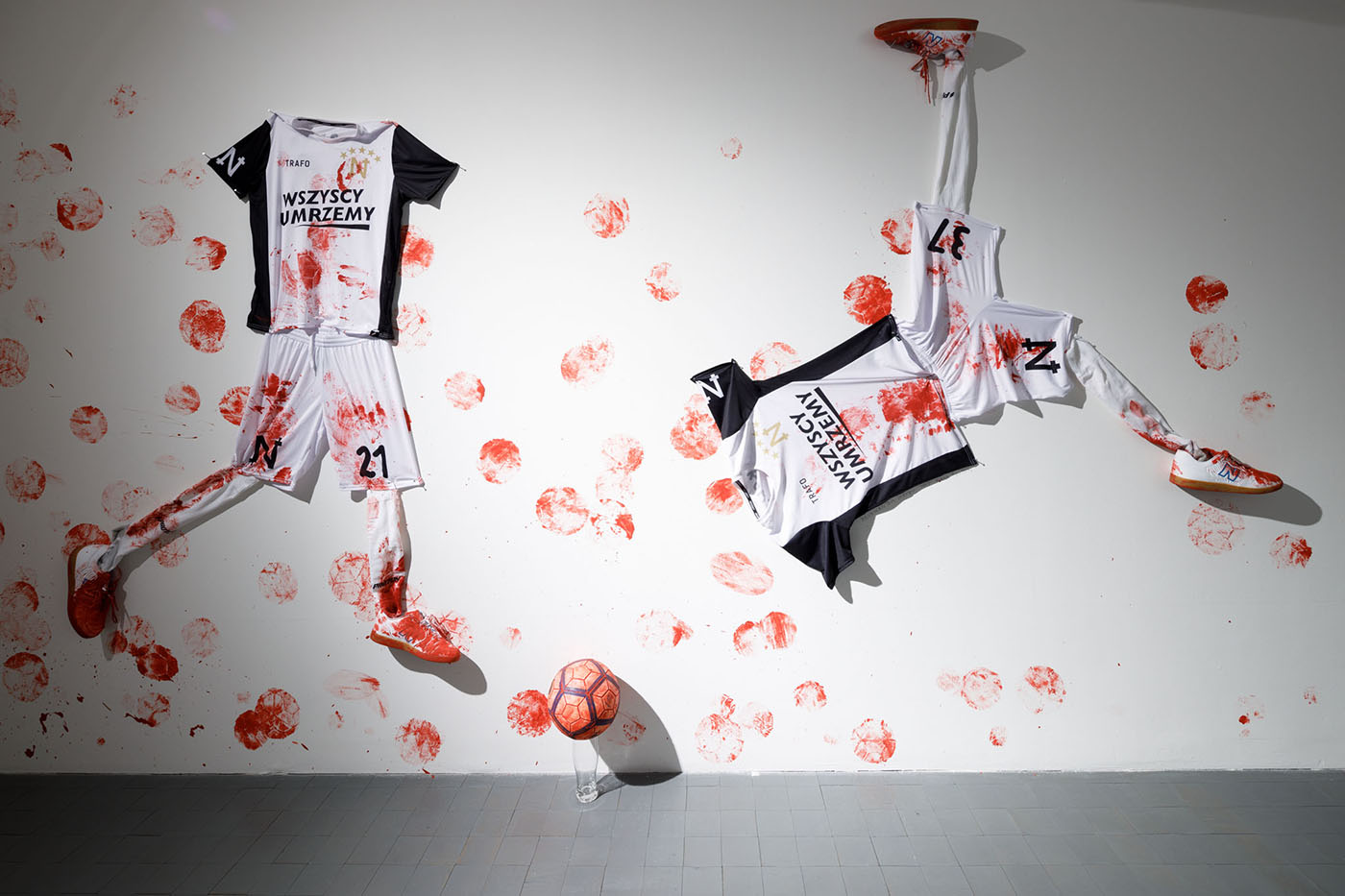
The identity of the Łódz street artist known as Janusz III Waza remains secret. His surrealist and absurd slogans on walls originate from hate speech by football fans. With exceptions, Waza’s works are connected to two Łódz clubs: ŁKS (Łódzki Klub Sportowy) and RTS (Widzew Łódź, after 1922 Robotnicze Towarzystwo Sportowe Widzew). It is not the only instance where Polish artists stand against fanaticism using their specific humour. A performance simply titled Football took place as part of the Fakty 74 exhibition opening in 1974 and was created by artists Natalia LL, Andrzej Lachowicz, Jerzy Rosołowicz and Kajetan Sosnowski. The creative impulse was the World Cup in Munich which was accompanied in Poland by mass nationalist victory propaganda. Zbigniew Warpechowski dressed in an original jersey of the Śląsk Wrocław team covered himself in mud before entering the gallery. He then ran among the visitors kicking a ball and seemingly on accident destroyed a sculpture by Kajetan Sosnowski. He then fell, simulating injury to “divert attention” from the incident. Even this performance, like many others, was shown at the First place in the table exhibition.
The exhibition took place from 21.4. till 24.7. 2022.



